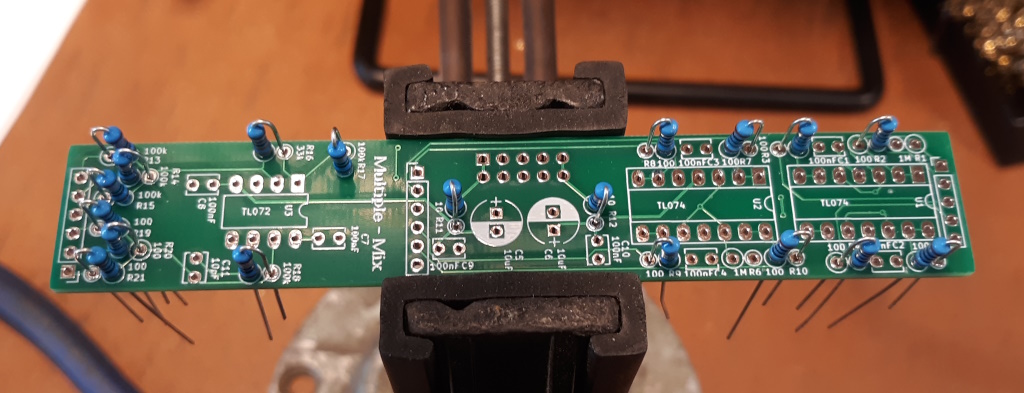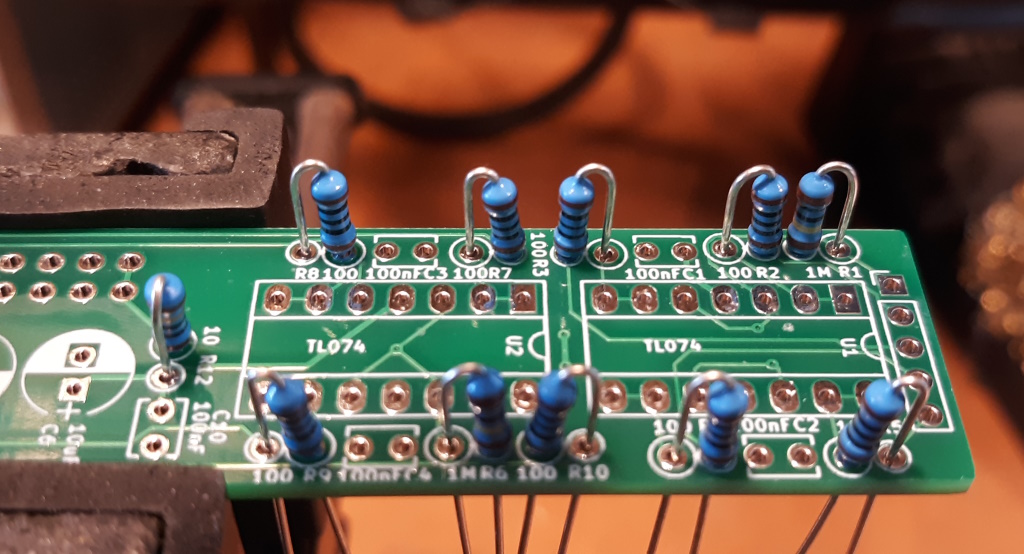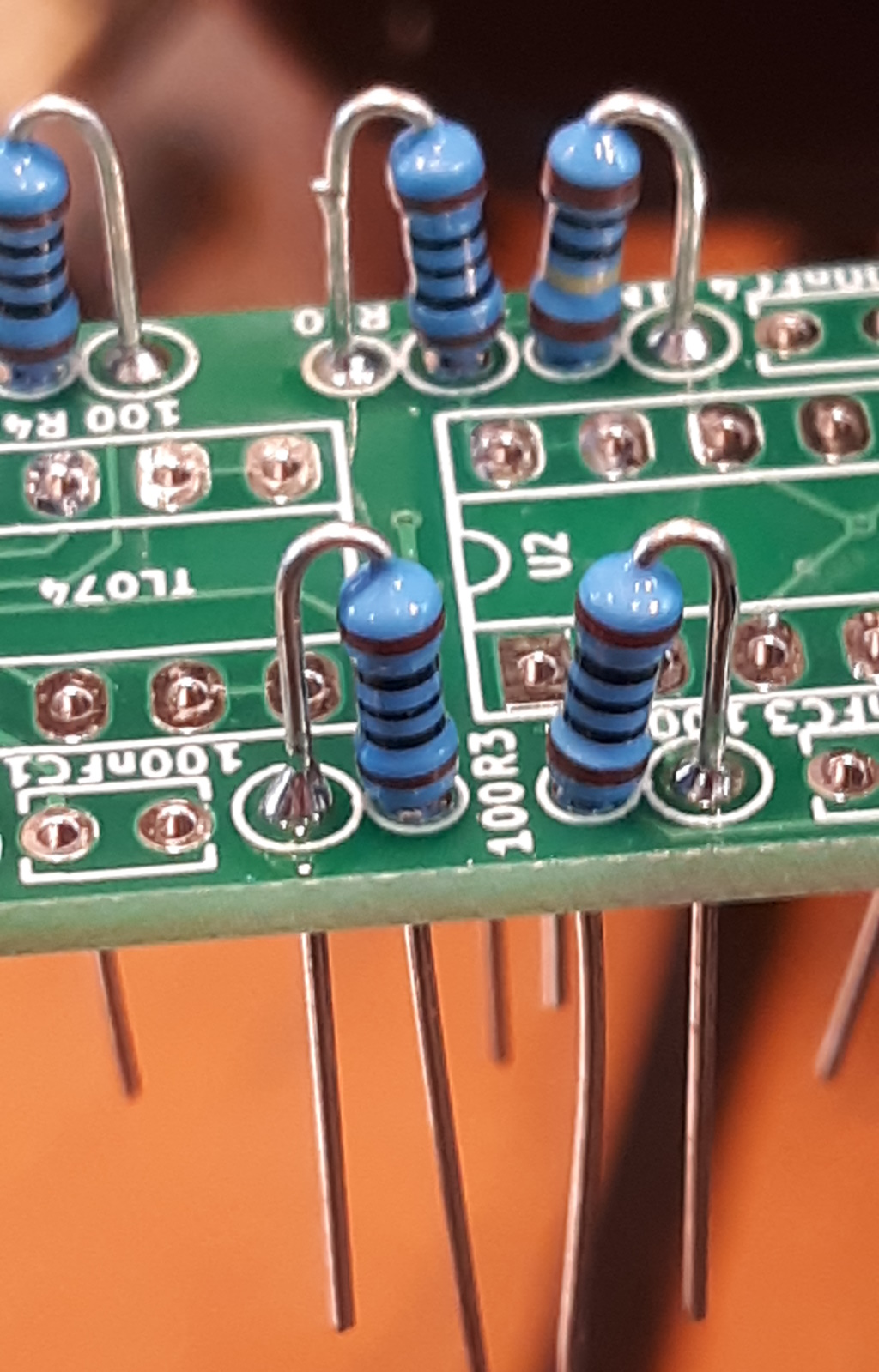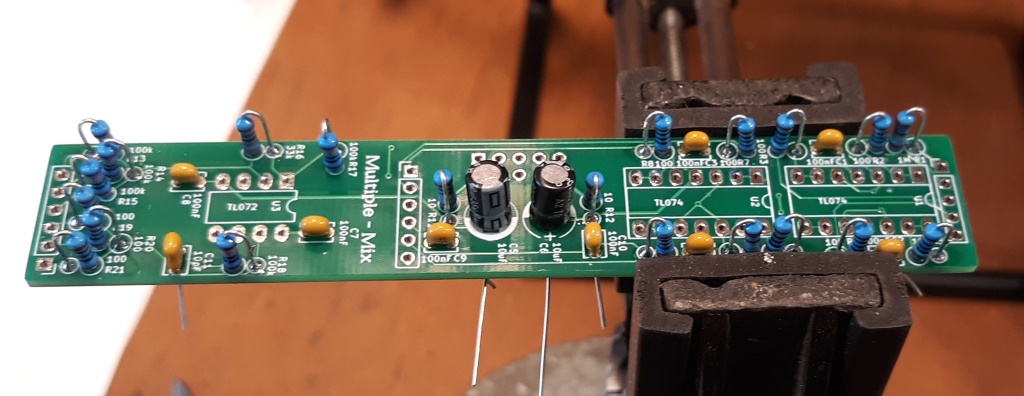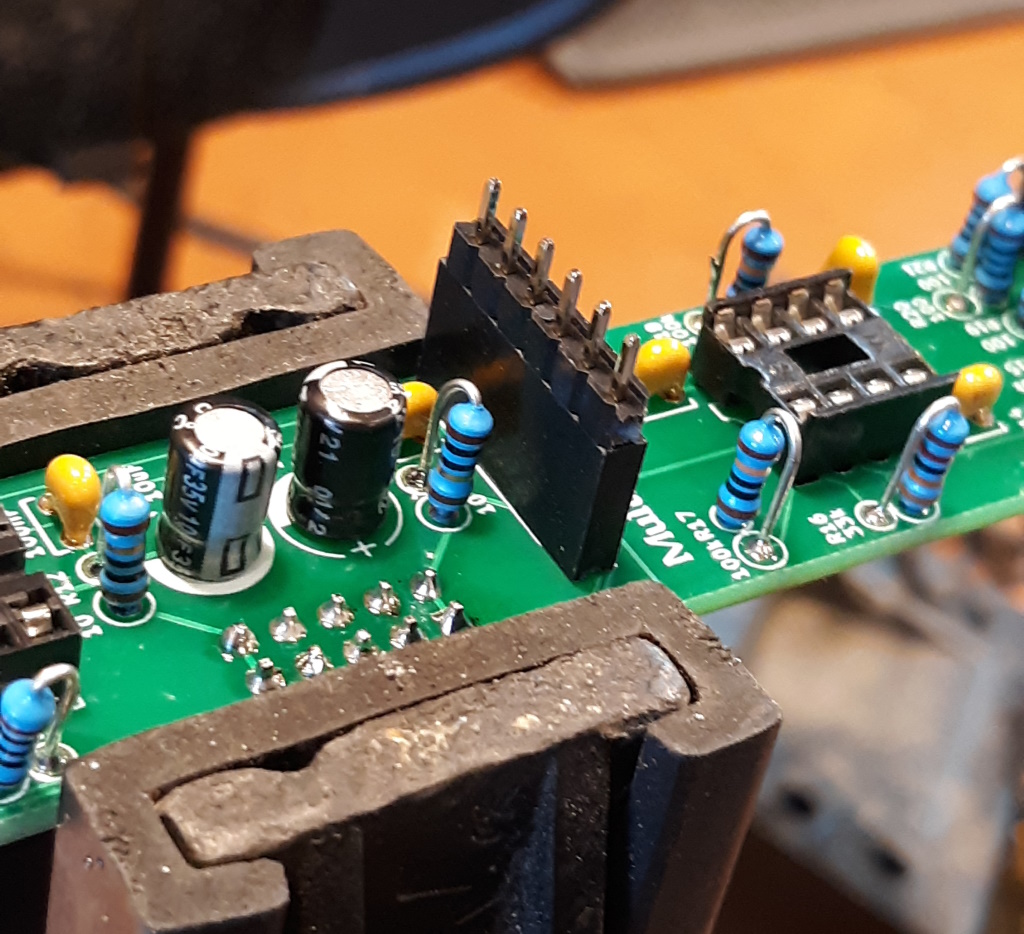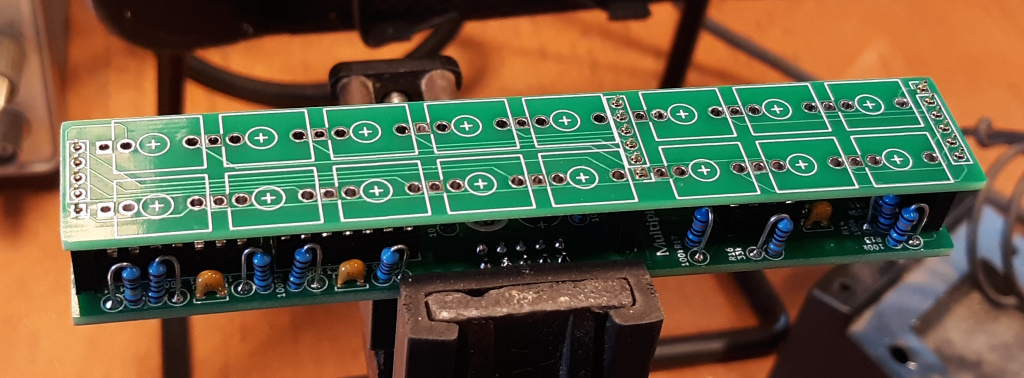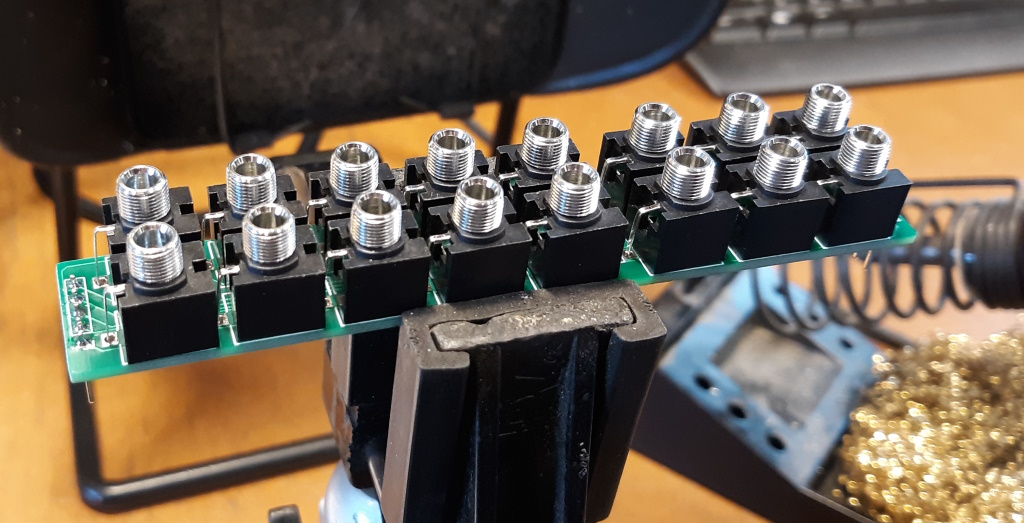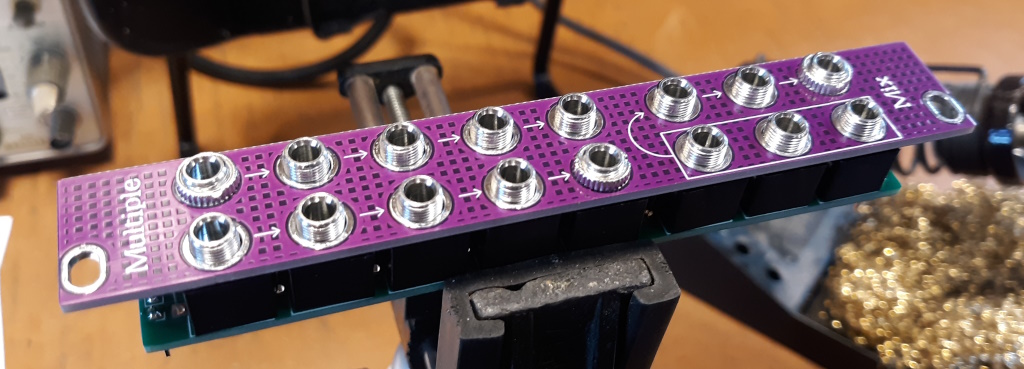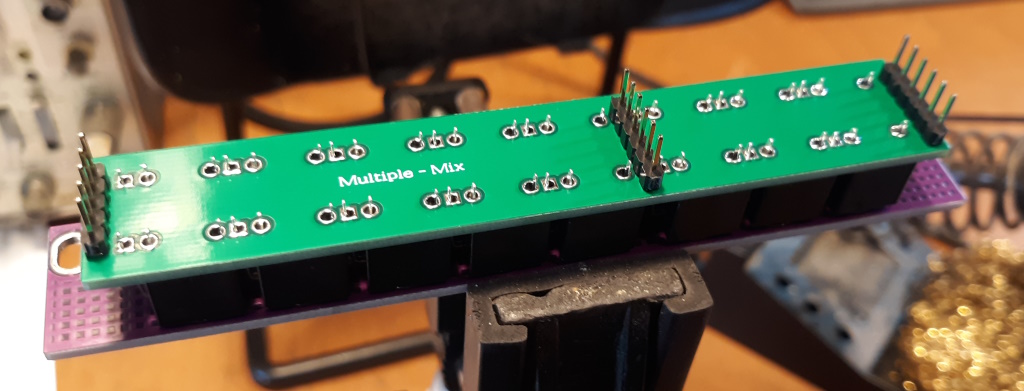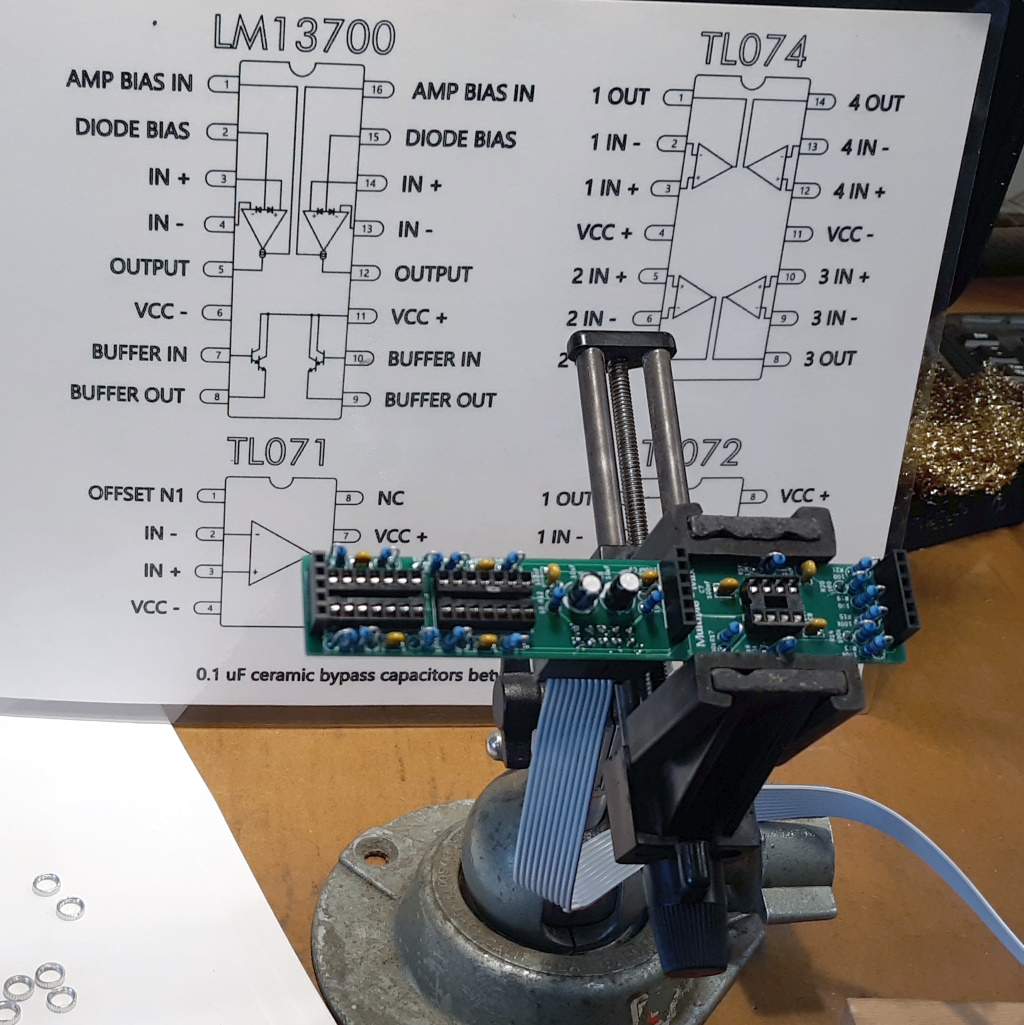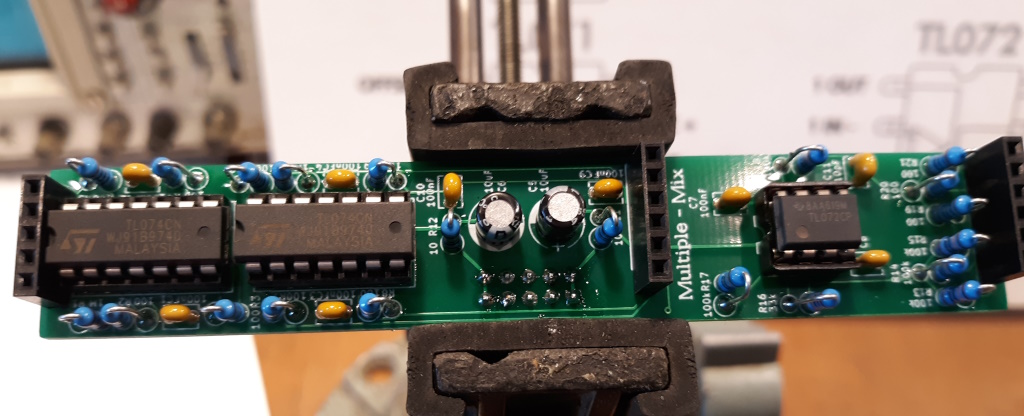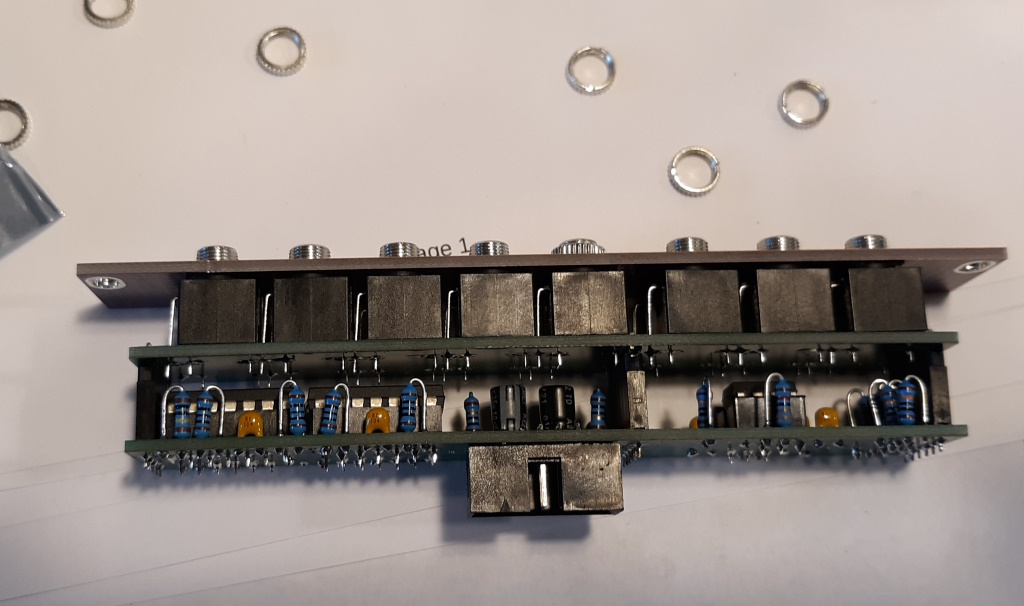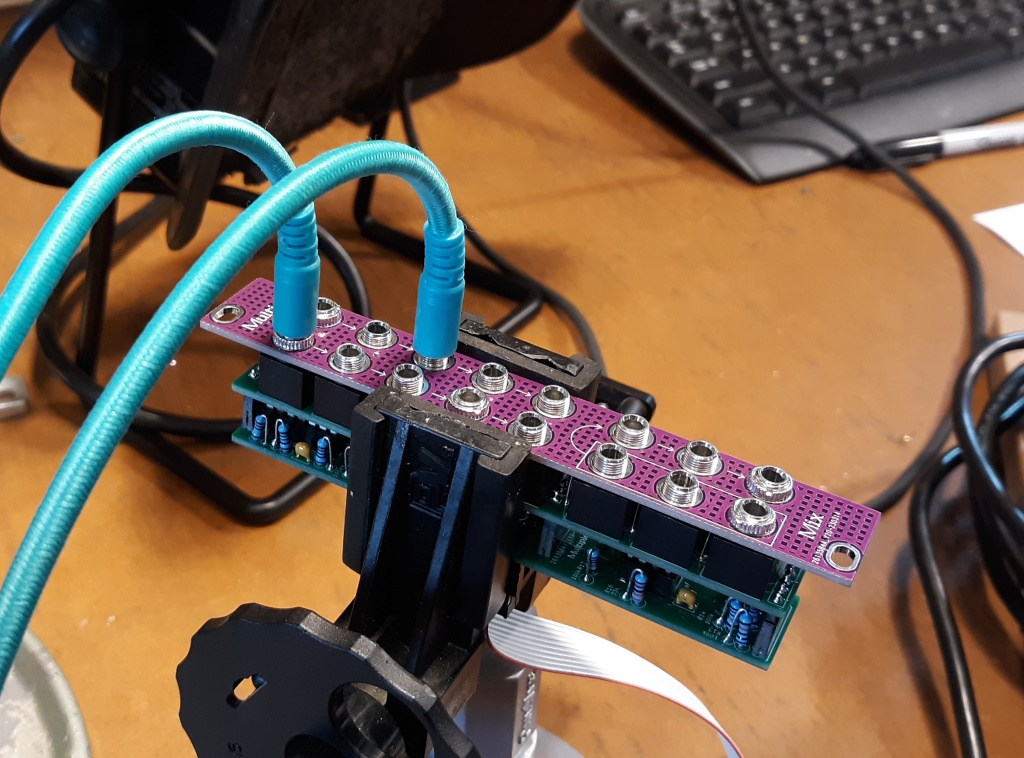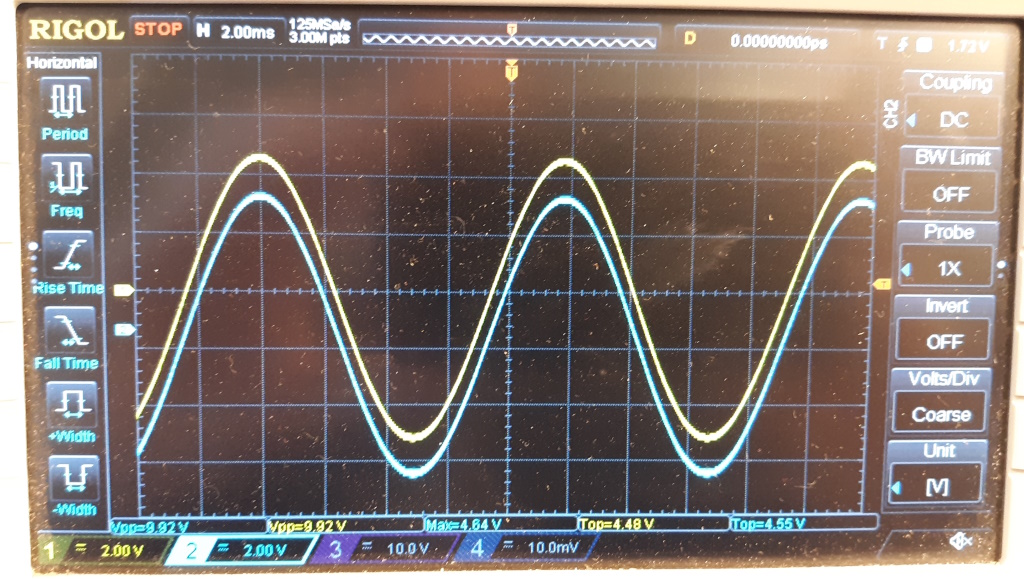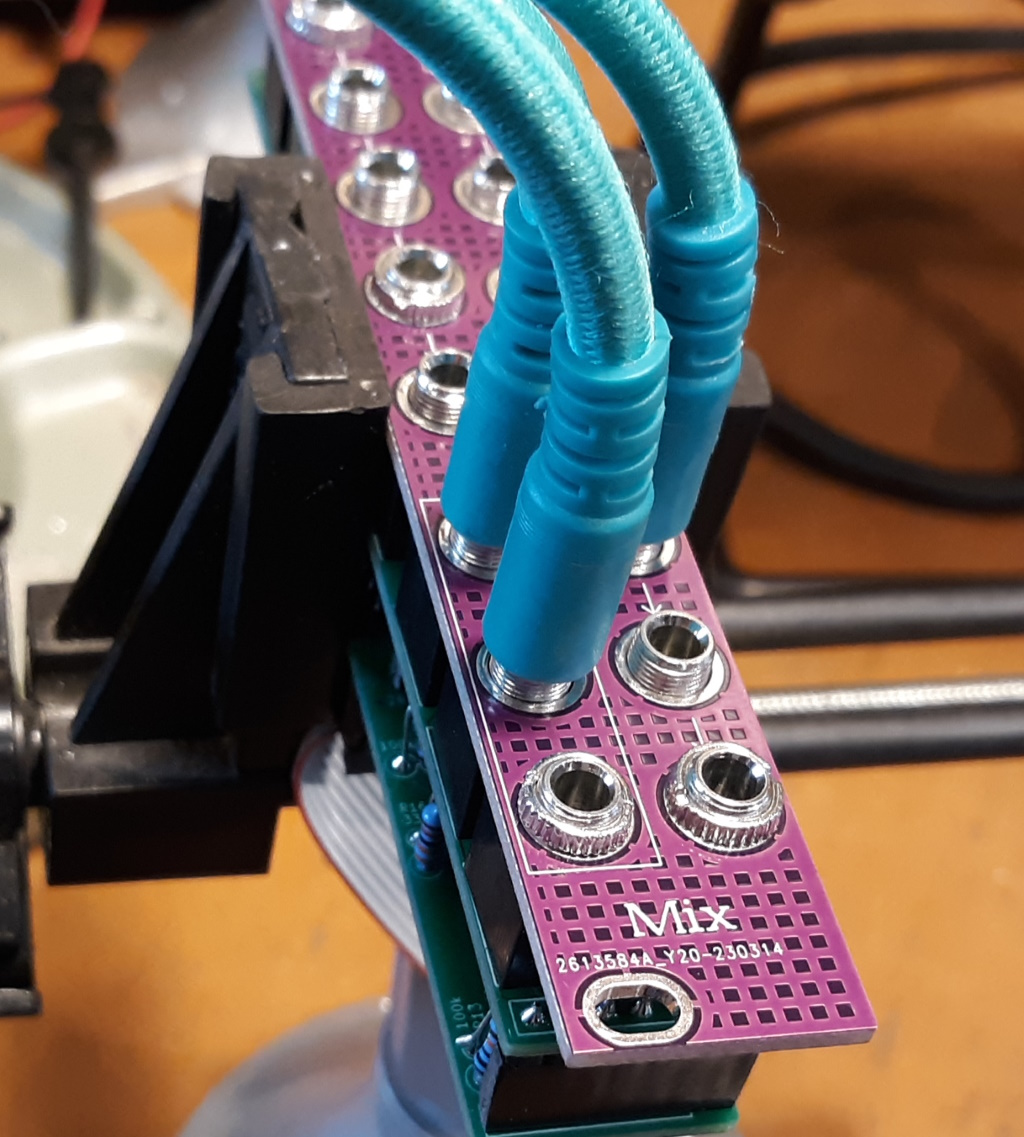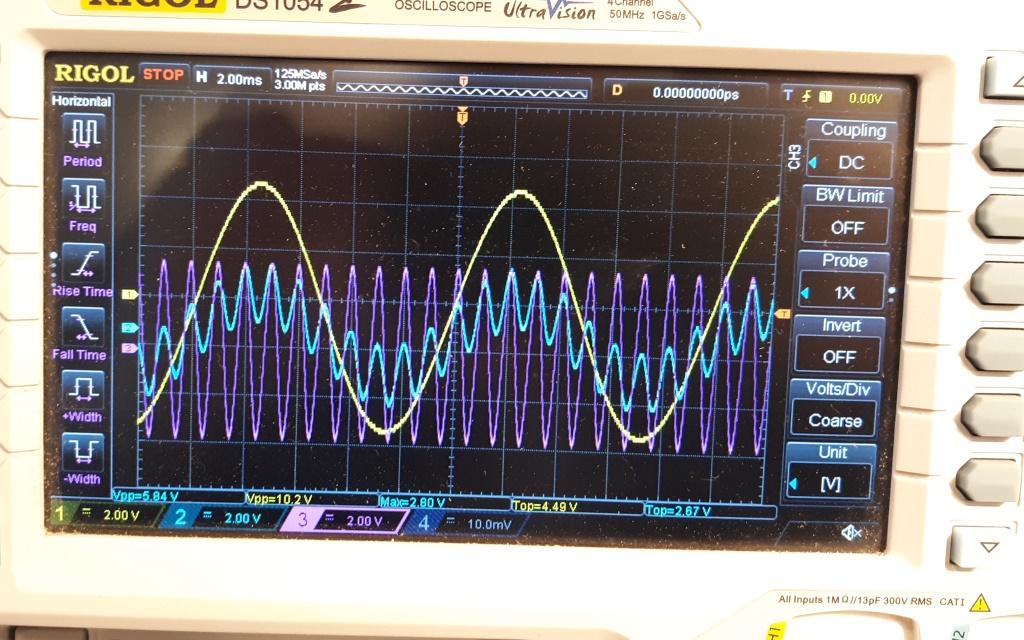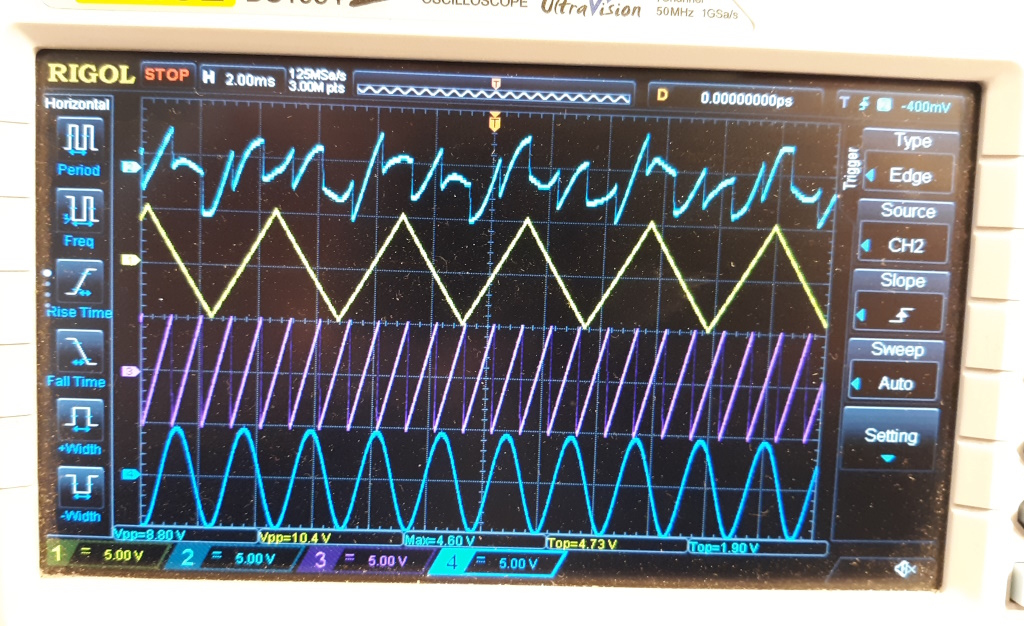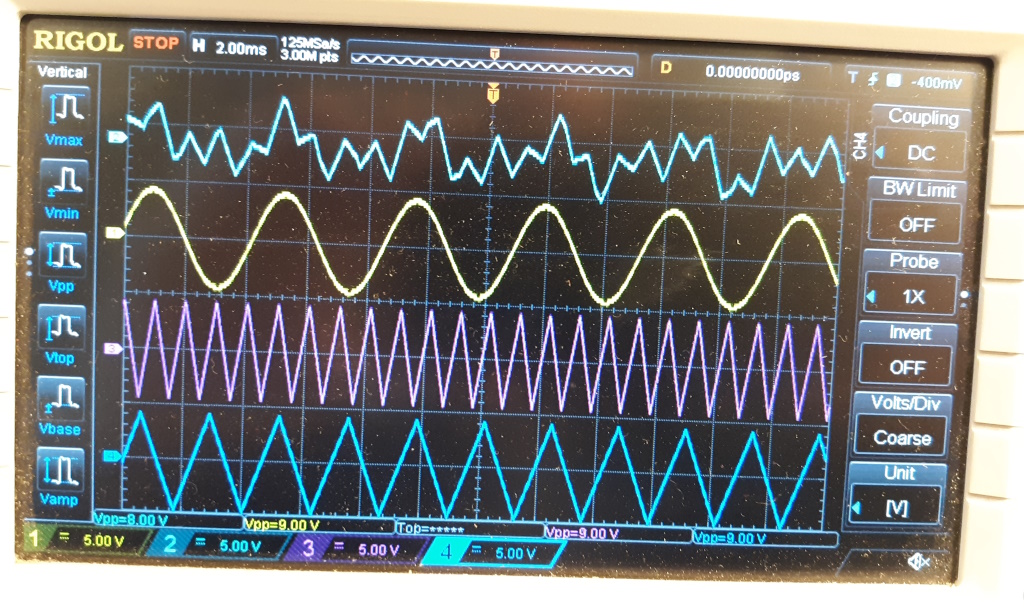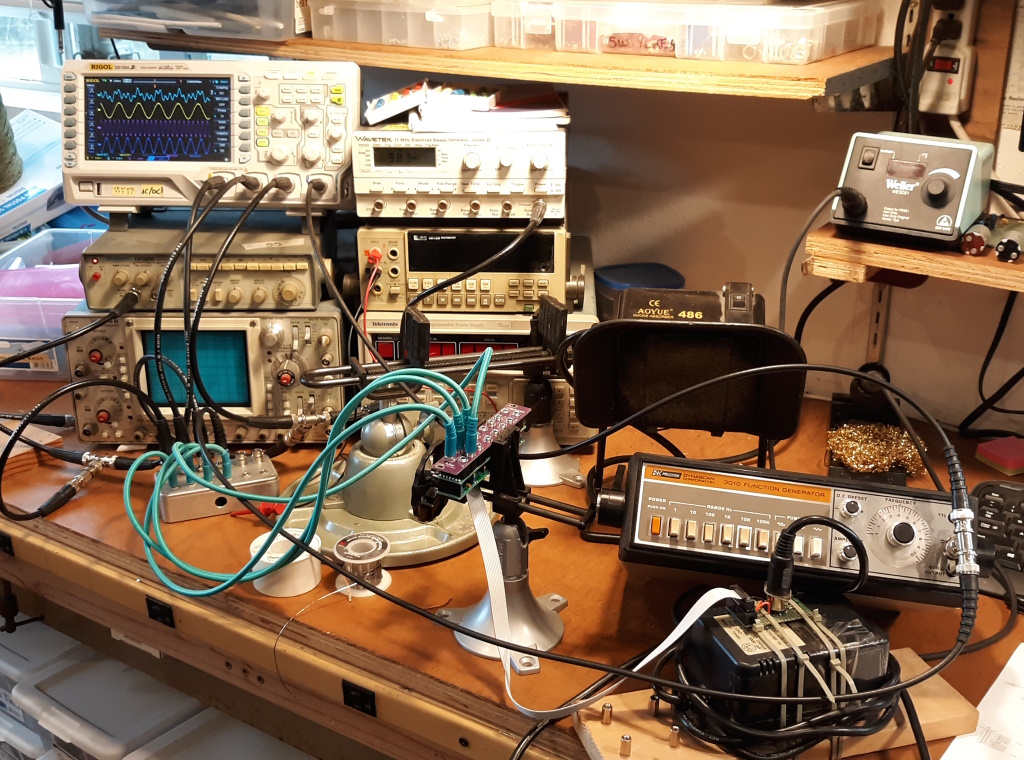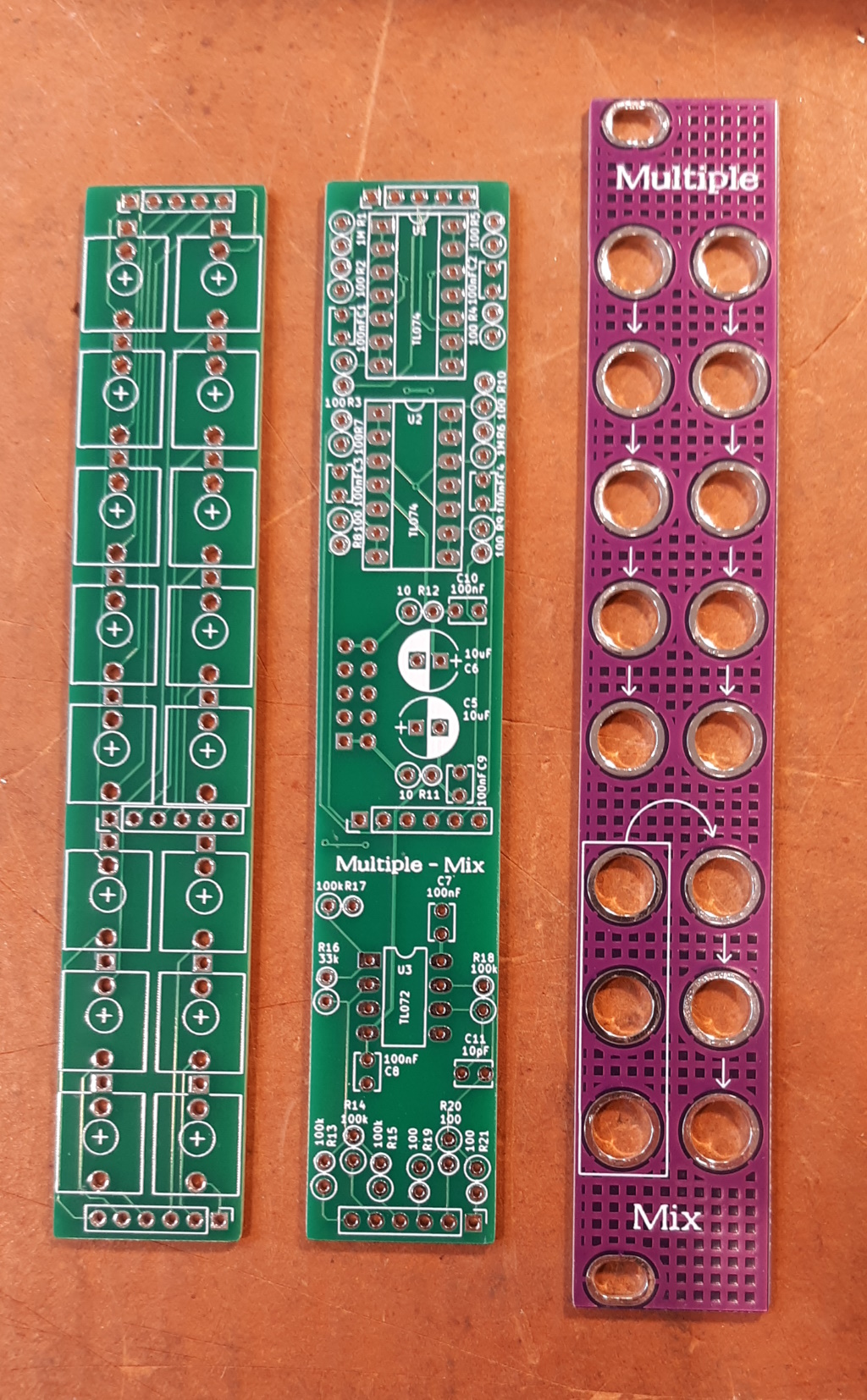
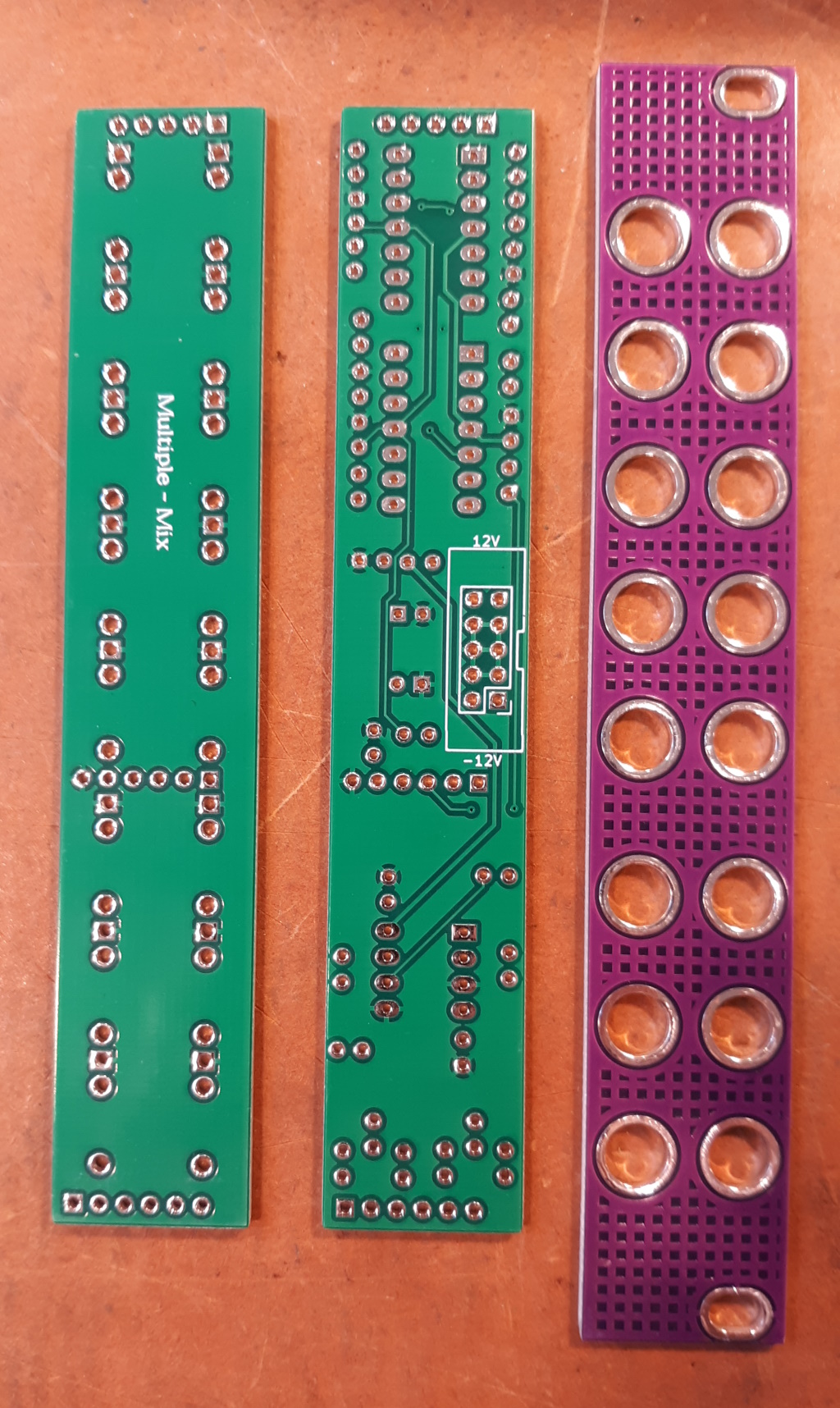
Qty Reference(s) Description
1 C11 10pF MLCC capacitor 2.5mm lead
8 C1, C2, C3, C4, C7, C8, C9, C10 100nF MLCC capacitor 2.5mm lead
2 C5, C6 10uF Electronlytic Capacitor 2.5mm lead. Less than 11mm, best 10mm or shorter.
2 R11, R12 10 Ohm resistor, 1/4W Metal Film 1% (*see note below*)
11 R2, R3, R4, R5, R7, R8, R9, 100 Ohm resistor, 1/4W Metal Film 1%
R10, R19, R20, R21
1 R16 33K Ohm resistor, 1/4W Metal Film 1%
5 R13, R14, R15, R17, R18 100K Ohm resistor, 1/4W Metal Film 1%
2 R1, R6 1M Ohm resistor, 1/4W Metal Film 1%
2 U1, U2 TL074 DIP package (use socket)
1 U3 TL072 DIP package (use socket)
3 U1,U2 DIP 14 Socket
1 U3 DIP 8 socket
2 J1, J2 Female 1x6 header, 2.54mm pitch
1 J11 Male 2x5 shrouded header, 2.54 pitch
1 J22 Female 1x5 header, 2.54mm pitch
JACK BOARD BOM
Qty
16 J1, J2, J3, J4, J5, J6, J7, J8, J9, Thonkiconn or compatible jack. Tayda Part# A-2563
J10, J12, J13, J14, J15, J16, J17
2 J11, J19 Male 1x6 header, 2.54mm pitch
1 J18 Male 1x5 header, 2.54mm pitch
Notes:
The 10 Ohm resistors R11 and R12 could be substituted with diodes for reverse voltage protection, or polyfuses or ferrite beads, or just a jumper link, depends on your personal philosophy about such protection for the power rails.
You can try different TL07x compatable pinout op amps to see if you like them better, like TL08x, etc.
33K Ohm resistor, R16 could be tweaked depending on the size of the signals you are mixing and what effect you want for attenuation or amplification.
All caps best rated 25V or higher.
If you get confused, listen to the music play. Then email me.
